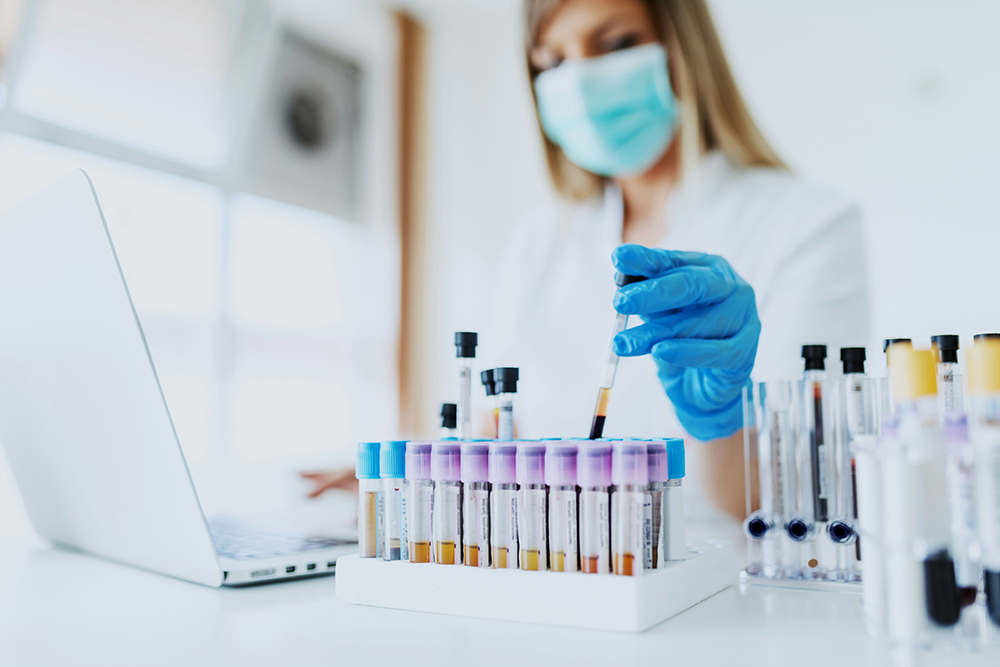Cocaine is a drug that can be detected in the body for a short period of time, usually between one and four days. The exact amount of time depends on several factors, such as the type of drug test used and individual differences like metabolism and health. Many people search for this information because they are worried about drug tests, or they want to understand how cocaine affects their bodies.
At Pathways Treatment Center, we help individuals in New Jersey who have questions about cocaine use and its effects. Our team provides support for people who are considering recovery or who have concerns about drug detection times.
What is cocaine, and how does it affect the body?
Cocaine is a stimulant drug that comes from the leaves of the coca plant. People use cocaine for its fast-acting effects on the brain and body.
Cocaine’s main effects include a brief feeling of euphoria, or intense happiness, that usually lasts 15–30 minutes. It also increases energy and alertness, making people feel very awake or “wired.” Physical changes caused by cocaine include a faster heartbeat, higher blood pressure, and increased body temperature.
After the effects wear off, people often experience a “crash.” This can mean feeling very tired, sad, or irritable. Repeated use can lead to stronger effects on the body and mind over time, sometimes referred to as the cycle of addiction.
In 2021, about 1.9% of people in the United States aged 12 or older reported using cocaine in the past year. Cocaine’s effects are short-lived, which can cause some people to use it multiple times in a short period.
The term “half-life” is used to describe how long it takes for half of the cocaine to leave the body. This helps scientists measure how long the drug and its byproducts can be found in a person’s system.
How is cocaine metabolized in the body?

Cocaine is processed in the body mainly by the liver. The liver breaks cocaine down into several byproducts, called metabolites. The most important metabolite for drug testing is benzoylecgonine.
Cocaine itself does not stay in the blood very long. The half-life of cocaine in blood is about 1 to 1.5 hours, which means half of the cocaine is gone from the blood in that time. Benzoylecgonine, on the other hand, has a half-life of about 12 hours, so it stays in the body much longer.
Most drug tests do not look for cocaine itself but for its metabolites, especially benzoylecgonine. While cocaine is quickly removed from the bloodstream, benzoylecgonine can be found in the body for several days after use. This is similar to how food is digested: the main substance is no longer present, but traces remain for a longer period.
Timeline: How long does cocaine stay in your system?

Cocaine can be detected in the body for different lengths of time based on the type of drug test and how often someone uses cocaine. The table below shows typical detection windows for various tests:
| Test Type | Detection Window (Single Use) | Detection Window (Regular Use)
|
| Blood | 12-48 hours | Up to 2 days |
| Urine | 2-4 days | Up to 2 weeks |
| Saliva | 1-2 days | 1-2 days |
| Hair | Up to 90 days | Up to 90 days |
Urine testing is the most frequently used method for workplace drug screening. Most urine tests use a cutoff of 300 ng/mL for benzoylecgonine, which is a main cocaine metabolite. The length of time cocaine is detectable in urine depends on how much and how often a person uses the drug, as well as other individual factors.
Cocaine does not stay in the blood for long; blood tests usually detect cocaine use for only a day or two. Saliva tests have a short detection period, usually up to two days. Hair tests can detect cocaine use for up to 90 days, regardless of whether use was single or regular. The detection window for each test varies, so the choice of test affects how long cocaine can be found in the body.
Cocaine detection times by test type
Urine testing is the most common way to check for cocaine in the body. The detection window depends on how often a person uses cocaine.
For single use, cocaine can be found in urine for about 2 to 4 days. Occasional or light use can extend this window up to one week. Chronic or daily use can result in a positive urine test for two weeks or more, and may require professional drug addiction treatment.
Hydration and kidney function can influence how quickly cocaine leaves the urine. Standards for workplace urine testing are set by organizations such as SAMHSA.
Blood tests are used to check for recent cocaine use. They can detect cocaine in the blood for about 12 to 48 hours after use.
These tests are used in medical emergencies, accident investigations, and legal cases when recent use is relevant. Blood testing is more invasive and more expensive than urine testing and is not commonly used for routine screenings.
Saliva testing detects cocaine use that happened in the past 1 to 2 days. This method involves collecting a saliva sample, which is non-invasive.
It is difficult to tamper with saliva tests, and they can show if someone has recently used cocaine and may still be impaired. Saliva tests are increasingly used for roadside checks and some workplace screenings, but the detection window is brief.
Hair testing can show cocaine use for up to 90 days. Hair grows at a rate of about 0.5 inches per month, and the standard test looks at about 1.5 inches of hair, representing three months of possible exposure.
Hair tests may not show very recent cocaine use, usually missing use that occurred in the last 7 days. When head hair is not available, body hair can be used for testing. Hair analysis is mainly used for pre-employment checks or when there is interest in a long-term pattern of drug use.
Factors that influence cocaine detection windows
The frequency and amount of cocaine use can change how long the substance is detectable in the body. Single-use is associated with the shortest detection times in drug tests. Occasional use might extend the detection window by a few days.
Regular or heavy use can cause cocaine and its metabolites to build up in the body, making them detectable for longer periods, especially in urine. For most people, cocaine from one-time use is usually out of the system in a few days, while chronic use can result in detection windows of two weeks or more. The length of time cocaine lasts in your system depends on how often and how much is used.
Each person’s metabolism and health affect how long cocaine remains in the body. Older adults often process substances more slowly due to age-related changes in metabolism. Individuals with higher body fat may store cocaine metabolites longer.
The liver is responsible for breaking down cocaine, so liver health plays a significant role. Kidney function also matters because the kidneys filter and eliminate cocaine metabolites through urine. Chronic health conditions may slow the body’s clearance of cocaine and its byproducts, leading to longer detection times.
The way cocaine is used can impact absorption and detection times. Snorting cocaine usually results in standard absorption and detection windows. Smoking crack cocaine allows for faster absorption, but detection windows are similar to other methods.
Injecting cocaine leads to a rapid onset, and the elimination timeline is similar to other consumption methods. Cocaine purity can also vary. Higher purity cocaine may be metabolized at a different rate, but all forms are ultimately broken down into the same metabolites in the body.
Hydration can influence how quickly cocaine is eliminated, as well-hydrated individuals may process and remove drugs through urine somewhat faster. Physical activity may increase metabolism slightly, but the effect on cocaine elimination is small.
Diet has minimal impact on how long cocaine stays in the system. Most lifestyle factors do not significantly change detection windows. Methods that claim to “detox” the body quickly are not supported by scientific evidence.
Does mixing cocaine with other substances change detection times?

When cocaine is used at the same time as alcohol, the liver processes both substances together and creates a new chemical called cocaethylene. Cocaethylene forms when cocaine and alcohol are in the body at the same time. This chemical remains in the system longer than cocaine alone because it has a longer half-life, which means it takes more time for the body to break it down and remove it.
Cocaethylene is also more toxic than either cocaine or alcohol by itself. It can put more strain on the heart and liver than either substance used alone.
Other drug combinations can also affect how long cocaine and its byproducts stay in the body. Using cocaine along with other substances can change how the body metabolizes (breaks down) drugs, which can result in cocaine being detectable for longer periods of time. Research shows that polysubstance use, which means using more than one drug at the same time, can extend the window in which cocaine is found on drug tests.
What to expect if you test positive for cocaine
Testing positive for cocaine can affect different parts of a person’s life. In the workplace, a positive test may result in losing a job or being asked to enter a treatment program. Employers often have policies about drug testing and how they respond to a positive result.
Legal consequences may also occur, depending on where a person lives and the situation in which the test was taken. Some legal settings, such as probation, custody cases, or criminal investigations, may have specific rules about drug test results.
A medical evaluation may be requested to check for possible health effects from cocaine use. Medical professionals may look for signs of physical or mental health problems related to cocaine.
Treatment options are available for those who test positive. Professional treatment can include medical support, addiction counseling, and other services to address cocaine use. Pathways Treatment Center provides a supportive and non-judgmental environment for individuals seeking help with cocaine addiction.
Getting help for cocaine use at Pathways Treatment Center
Pathways Treatment Center provides treatment for cocaine use that is based on scientific research and clinical best practices. Care plans are created to match each person’s specific needs and situation. This means that treatment is not the same for everyone; it is tailored to the individual.
Support is also available for people who are dealing with mental health challenges along with cocaine use, which is known as co-occurring or dual diagnosis care. Treating both substance use and mental health conditions at the same time is an important part of many recovery programs.
Pathways Treatment Center accepts many types of insurance to help make care more accessible. Programs offered include Partial Hospitalization, where individuals attend treatment during the day, and Intensive Outpatient, where treatment sessions are scheduled around daily responsibilities.
If you or a loved one has concerns about cocaine use or a positive drug test, confidential assessments and personalized treatment plans are available at Pathways Treatment Center.
FAQs about how long cocaine lasts in your system
Drinking water and exercising do not have a significant effect on how quickly cocaine leaves your system. Cocaine is processed by the liver at a steady rate, and detection times are influenced mainly by how your body works, not by lifestyle habits.
It is extremely unlikely for someone to test positive for cocaine from secondhand exposure to cocaine smoke. Drug tests use cutoff levels that are intended to detect actual use, not environmental contact.
Home drug tests can find cocaine metabolites in a person’s system, but they may not be as reliable as laboratory tests. Home tests may be useful for initial checks, but laboratory tests are more accurate for situations like employment or legal matters.
Cocaine can remain in the body for a longer period if a person has used it often or over a long time. Chronic or repeated use can lead to detection in urine for up to two weeks, while single use is usually detected for 2 to 4 days.


